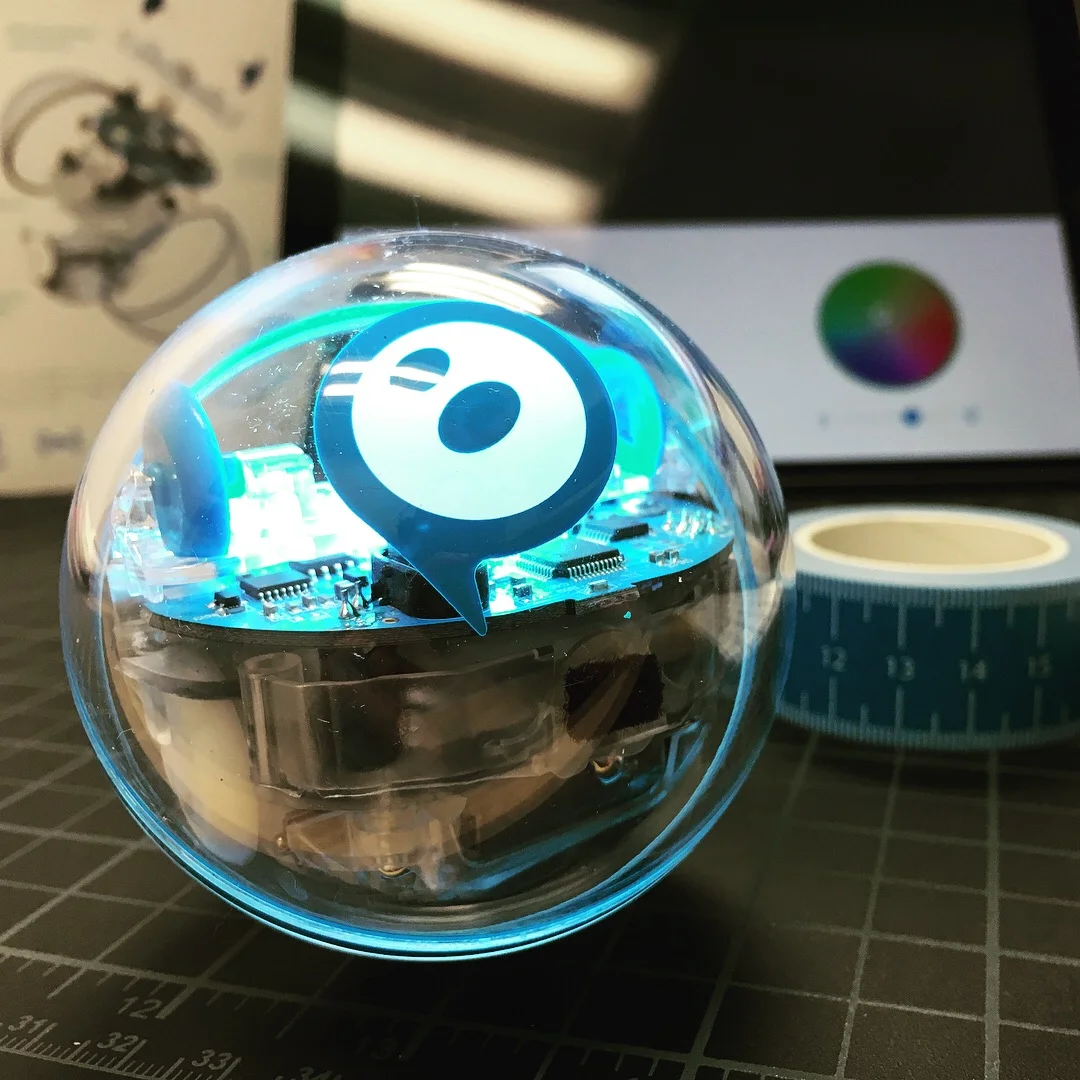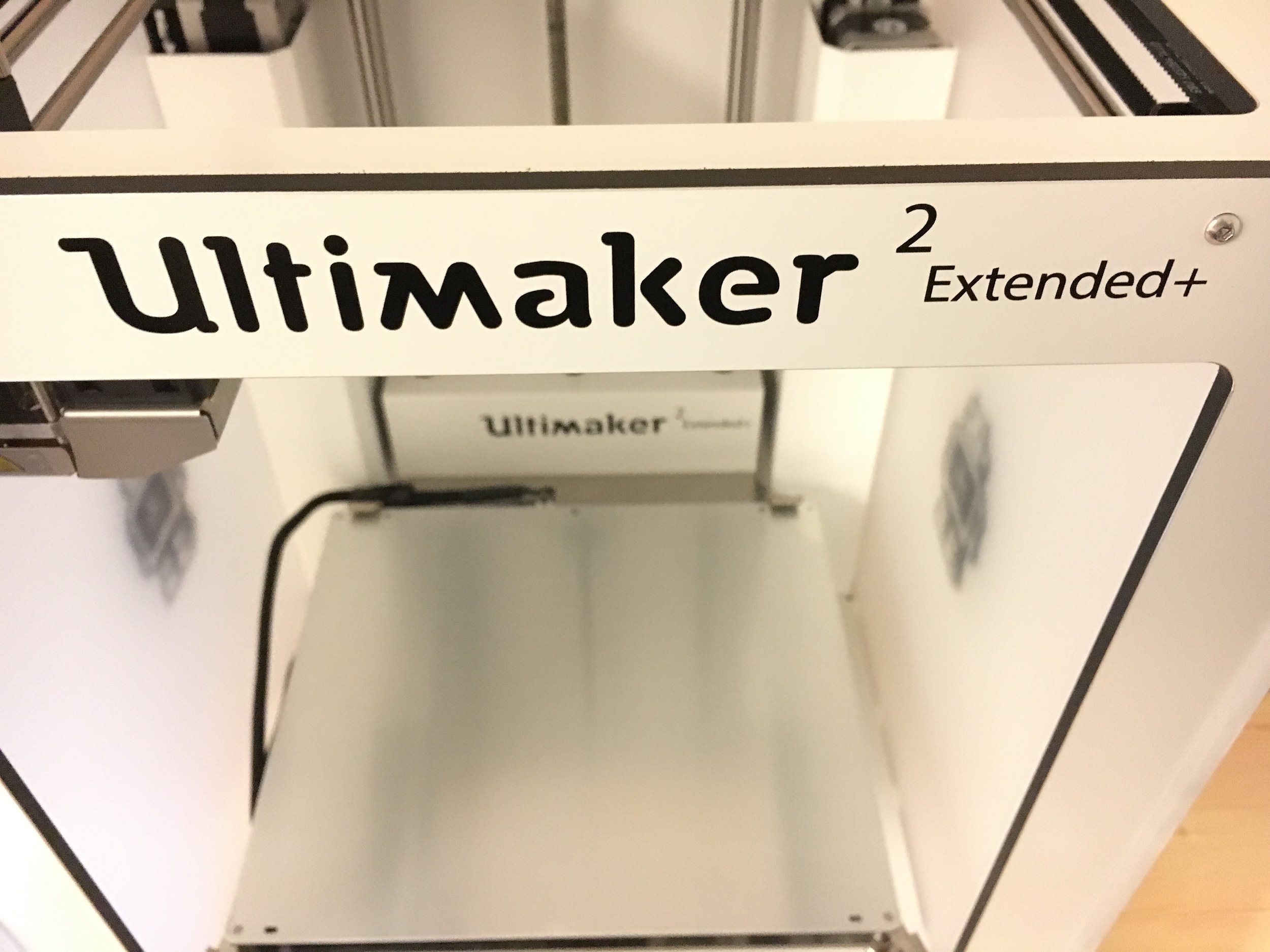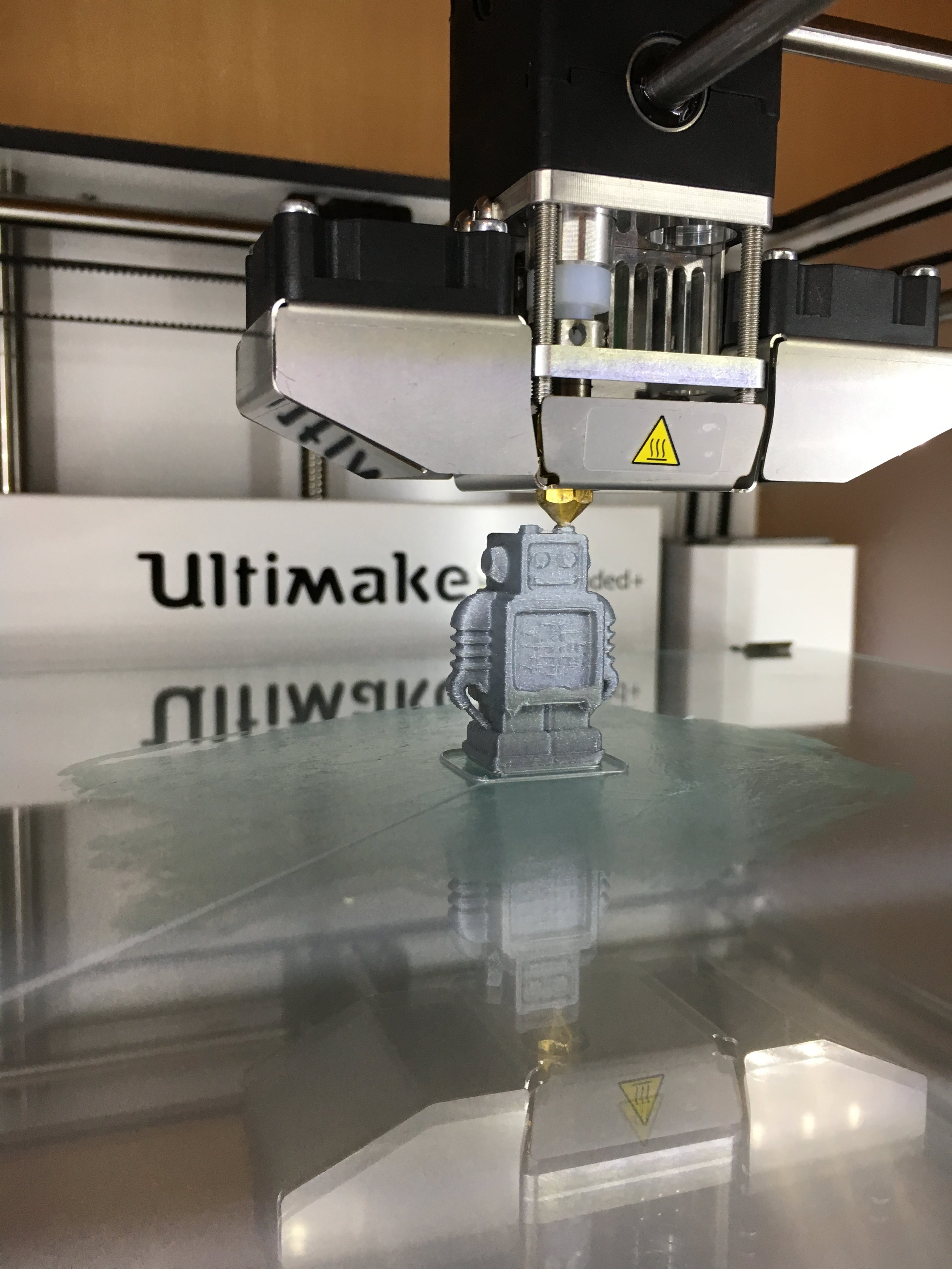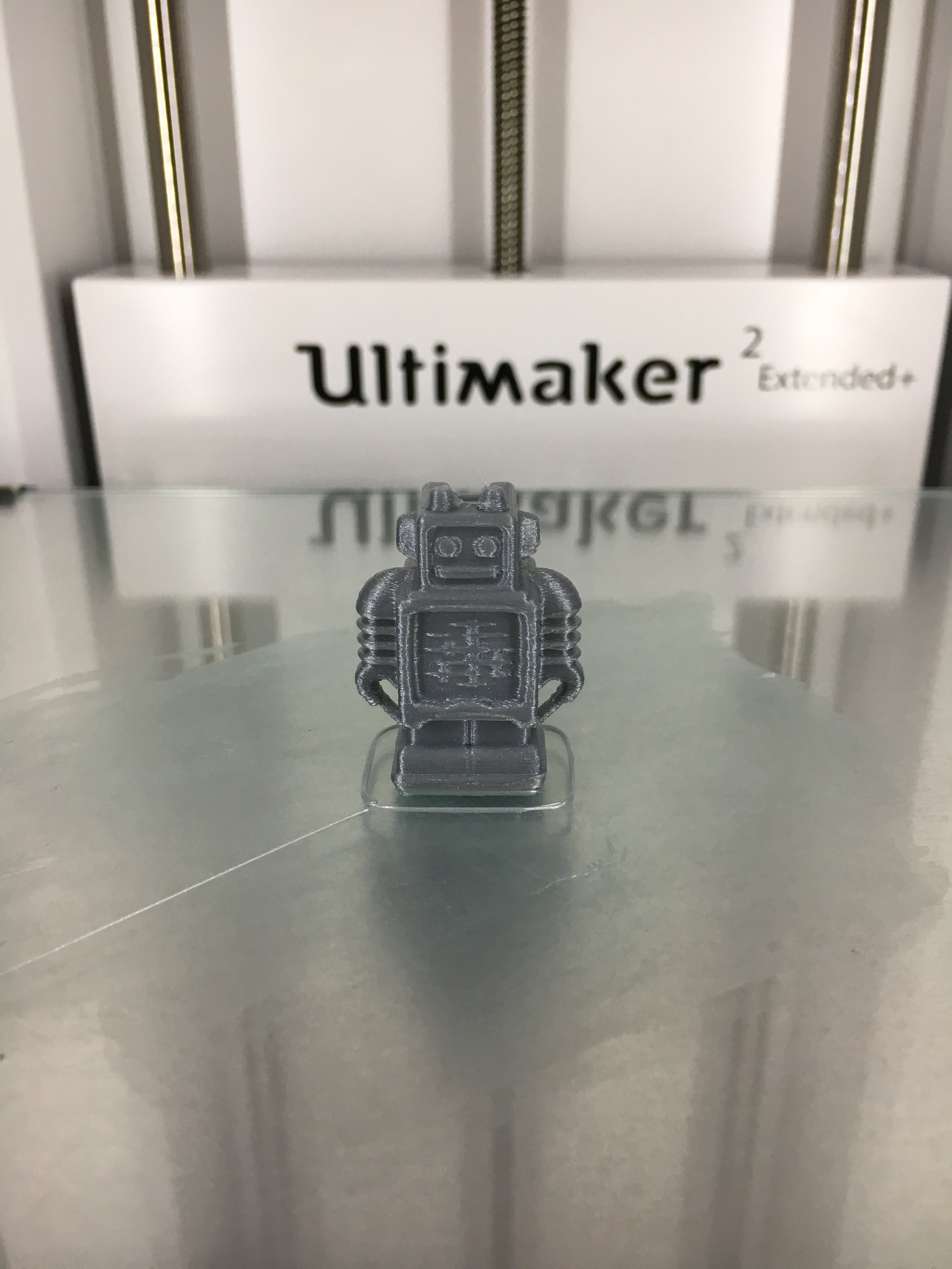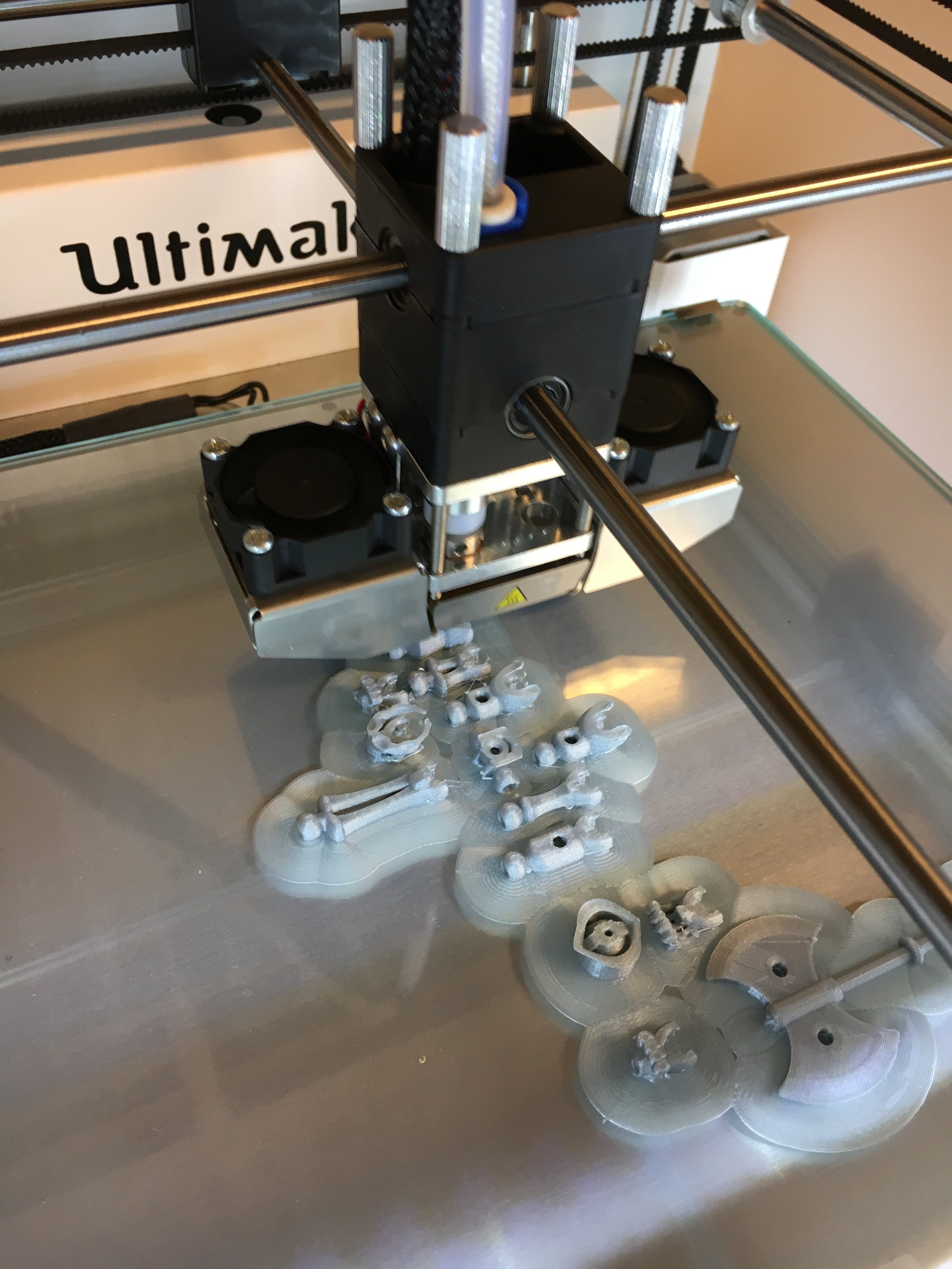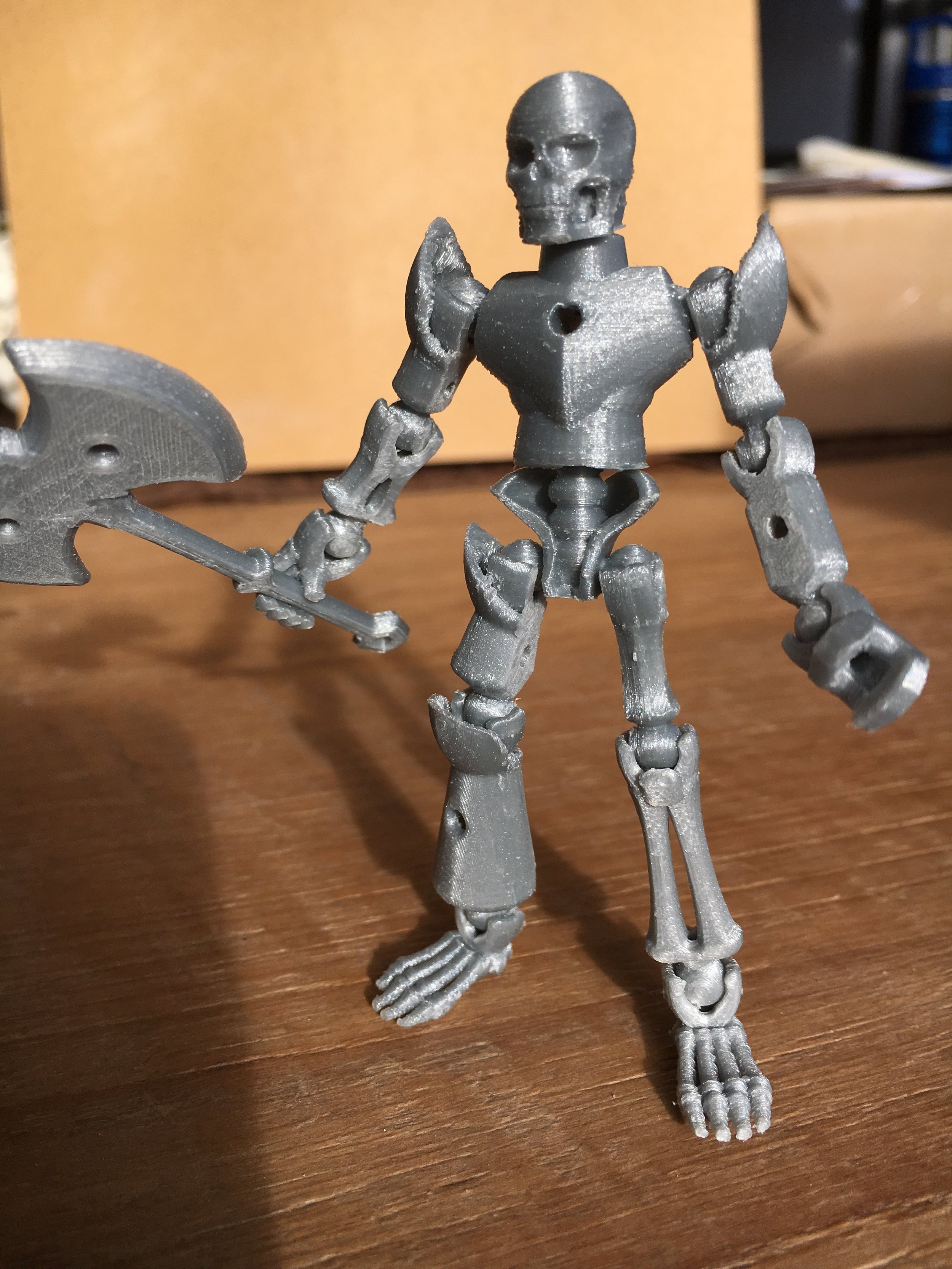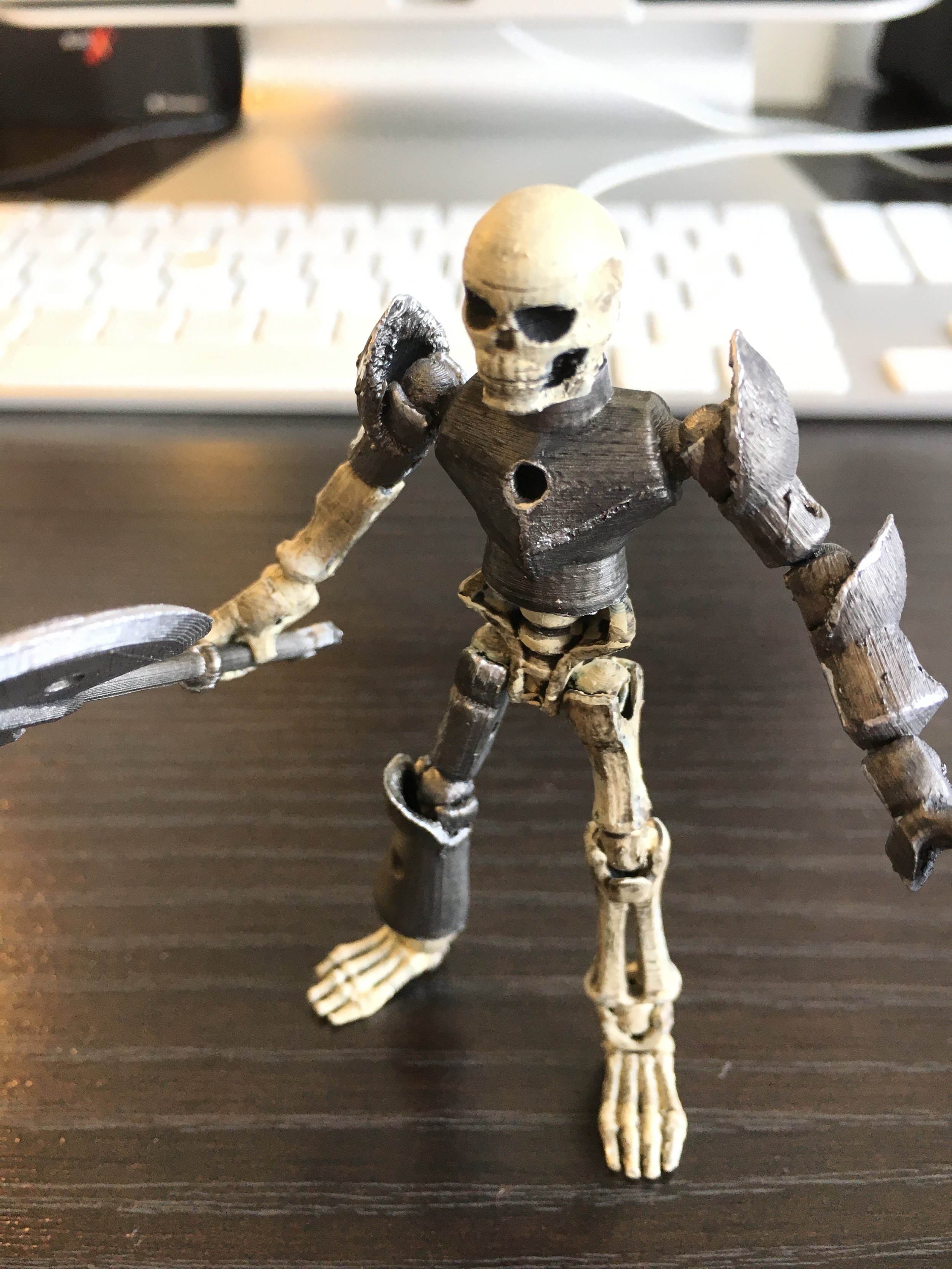Generative AI Workshop
An exploration of emergent artificial intelligence tools, Spring semester 2023.
Spring semester 2023 - the one topic that seems inescapable is artificial intelligence (AI) or more specifically the “Cambrian explosion” of generative AI platforms such as ChatGPT, StableDiffusion, Elevenlabs, and MidJourney just to name a few. This increasing awareness and need for exploring and understanding generative AI led to the development of this short introductory workshop offered in the Spring 2023. One of the core tenants of the experience is taking a hands-on approach through a Learn-it, Try-it, and Apply-it model with a short section of reflection.
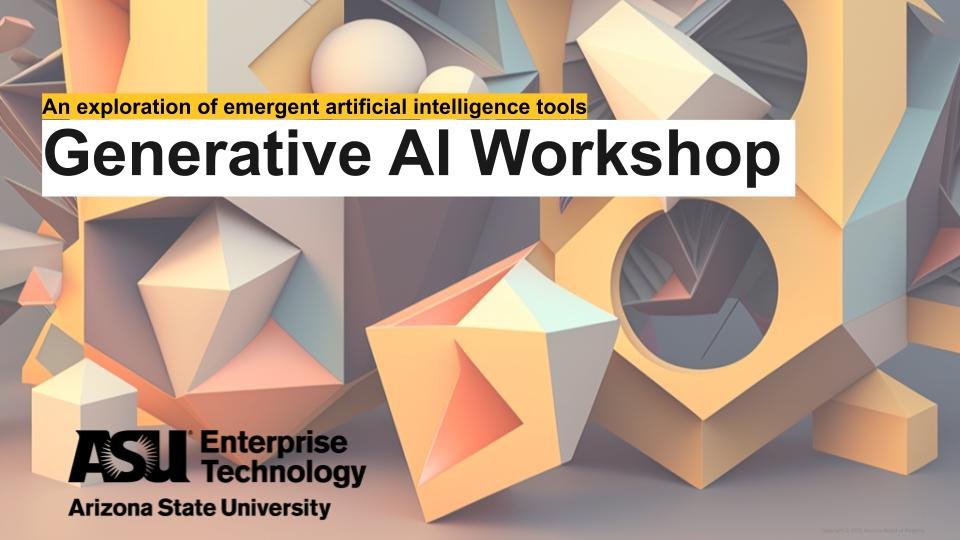
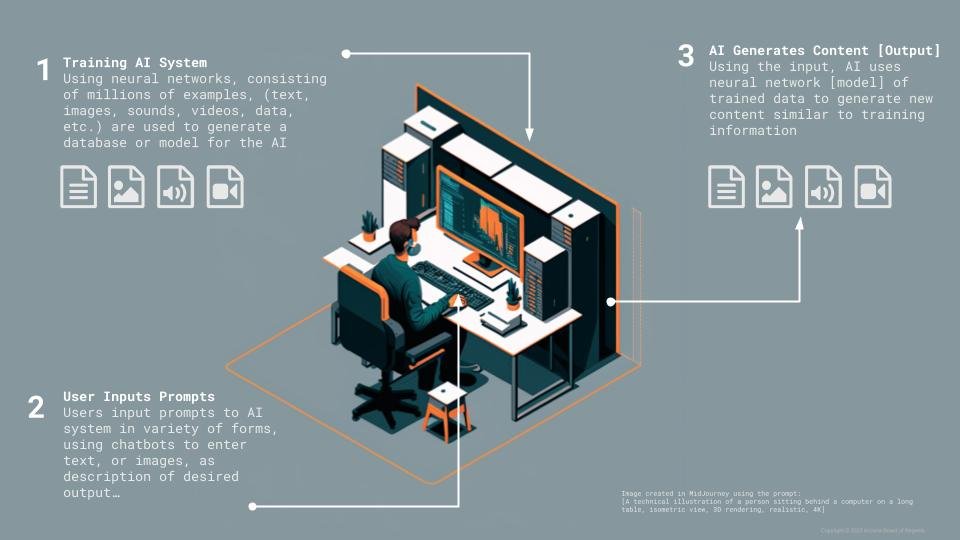
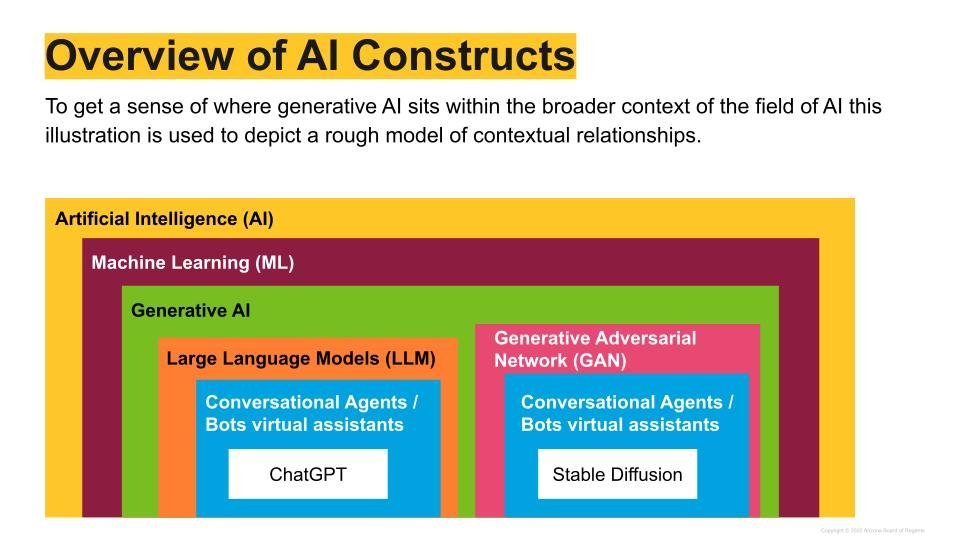
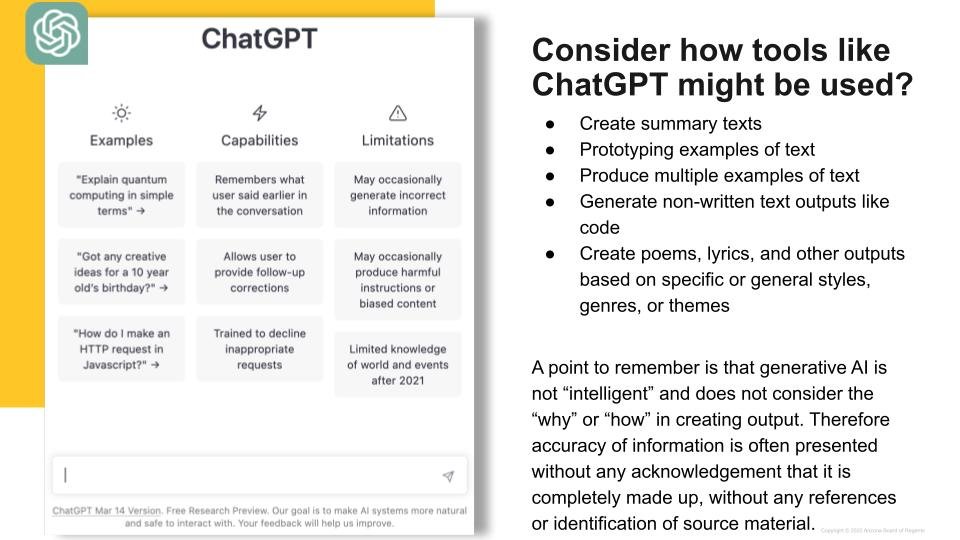
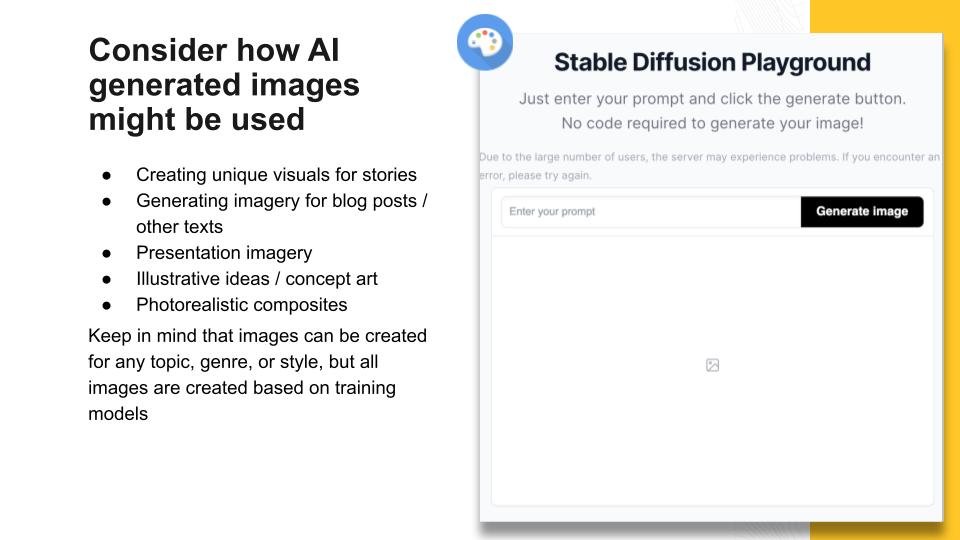
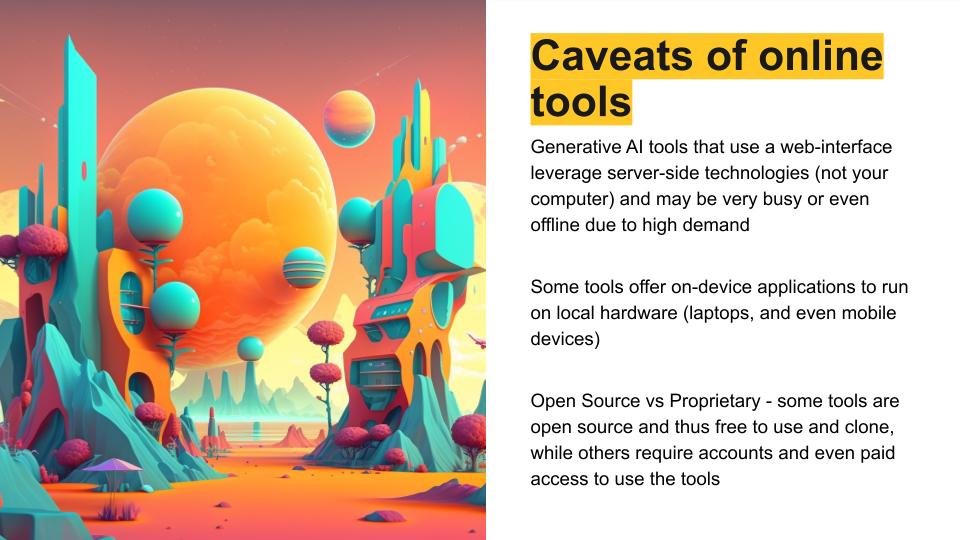

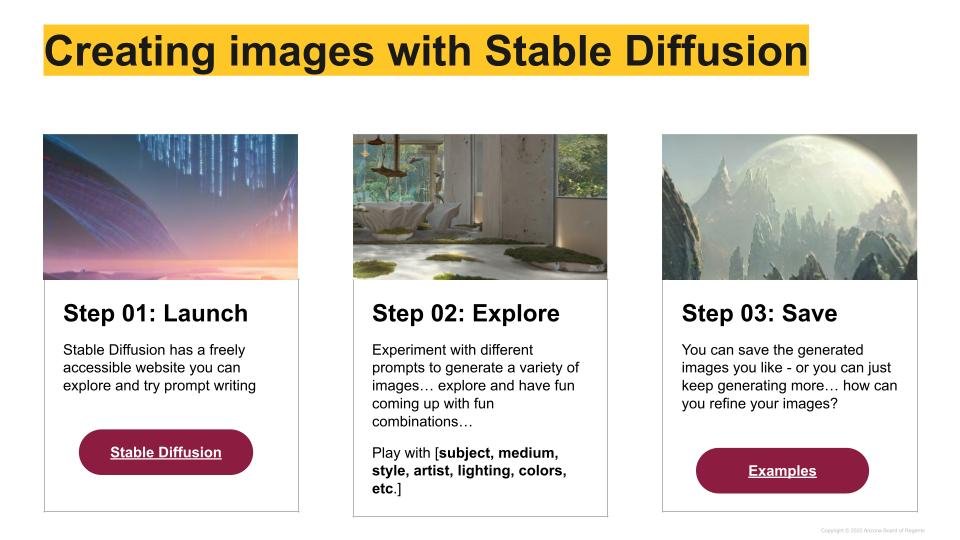
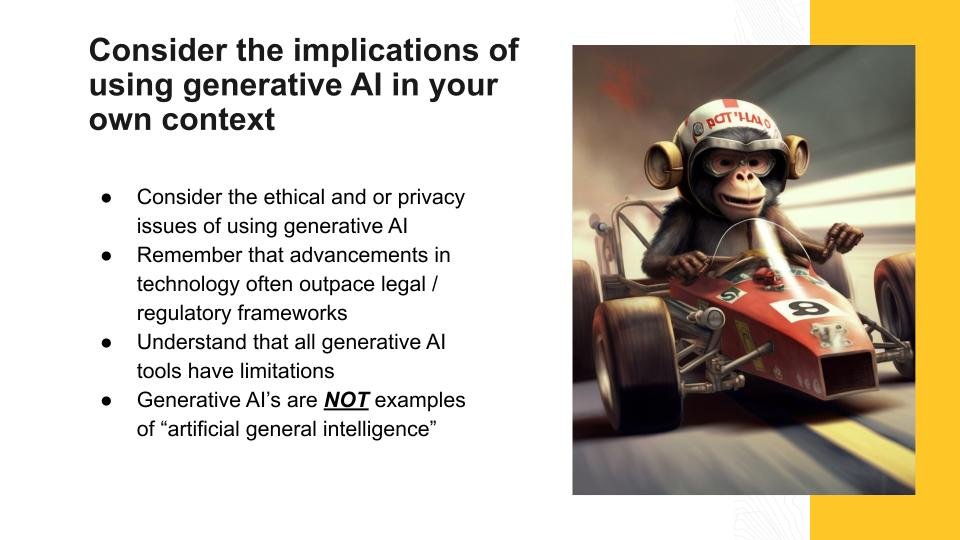

Goals and Learning Outcomes
As educators work to familiarize themselves with these new and emergent tools this workshop was designed to foster a positive discourse to encourage a constructive dialogue and atmosphere regarding the integration of Generative AI in educational practices, academic research, and creative endeavors.
Learning Outcomes
High level understanding of fundamental technology behind popular generative AI applications
Discuss experiences and observations of affordances and constraints of generative AI tools
Evaluate potential impact on educational context, and identify areas of need for deeper understanding
Background on the Purpose and Need
As the field of Artificial Intelligence (AI) continues to evolve and grow, there has been an increasing interest in the use of Generative AI in various industries (or perhaps another way to think about this - are there any industries at the moment that is NOT looking into the disruptive potential of generative AI?). In the field of higher education, Generative AI has the potential to revolutionize the way students learn and interact with the world around them. By enabling machines to generate new and unique content, educators can create personalized learning experiences that cater to each student's individual needs. However, with this exciting potential comes a need to understand how this technology actually works, and to evaluate the affordances and constraints it has in each contextual setting. Hosting a workshop for higher education faculty on Generative AI is crucial for ensuring that educators have the skills and knowledge necessary to incorporate this technology into their teaching practices effectively.



